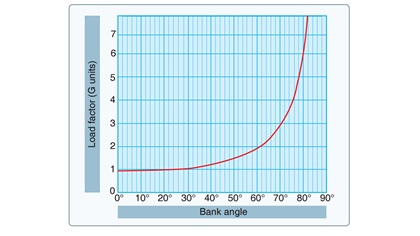Training Tip: Limits for maneuvers
Flight-test day is approaching. As it draws nearer, your instructor is spending more time during ground preparation grilling you on elements of the tasks and maneuvers that you will be working on during practice sessions. Sometimes, the CFI tosses you a curveball.
When you arrive at the airport for today’s flight, the CFI has that curveball-pitcher look.
For steep turns, which are flown at a 45-degree bank angle, your CFI always verifies that you know the appropriate maneuvering speed; for your 1978 Cessna 172N it ranges between 80 knots indicated airspeed and 97 KIAS, depending on weight. You ran the numbers for today; now you volunteer the airspeed that you will not exceed during the maneuver.
That’s fine, the CFI says. But, what is the minimum speed to watch out for during a steep turn?

The question reminds you to consider both the risks of imposing an excessive structural load on the airplane by making “full or abrupt” control inputs above maneuvering speed, and also how to avoid exceeding the wing’s critical angle of attack (AOA) by letting your airspeed get too low during the high-load-factor maneuver.
The question may seem like a curveball, but the airspeed at which AOA becomes critical increases with bank angle, so awareness of the associated stall risk is critical.
“As a general note, a ground reference maneuver should not exceed a bank angle of 45° or an airspeed greater than maneuvering speed,” advises the Airplane Flying Handbook on page 6-3.
In a hint of where your instructor’s curveball question originates, it adds, “As part of preflight planning, the pilot should determine the predicted (POH/AFM) stall speed at 50° or the highest bank angle planned plus some margin for error in maneuvering.”
To illustrate the point, the textbook notes that “if an airplane stalls in level flight at 50 knots, it will stall at 60 knots in a level-altitude, 45° banked turn and at 70 knots in a level altitude, 60° banked turn.”
Keep watch on your bank angle—not just to satisfy the ACS, but because, as the Pilot’s Handbook of Aeronautical Knowledge notes (page 5-34), “the load factor increases at a terrific rate after a bank has reached 45° or 50°.”


